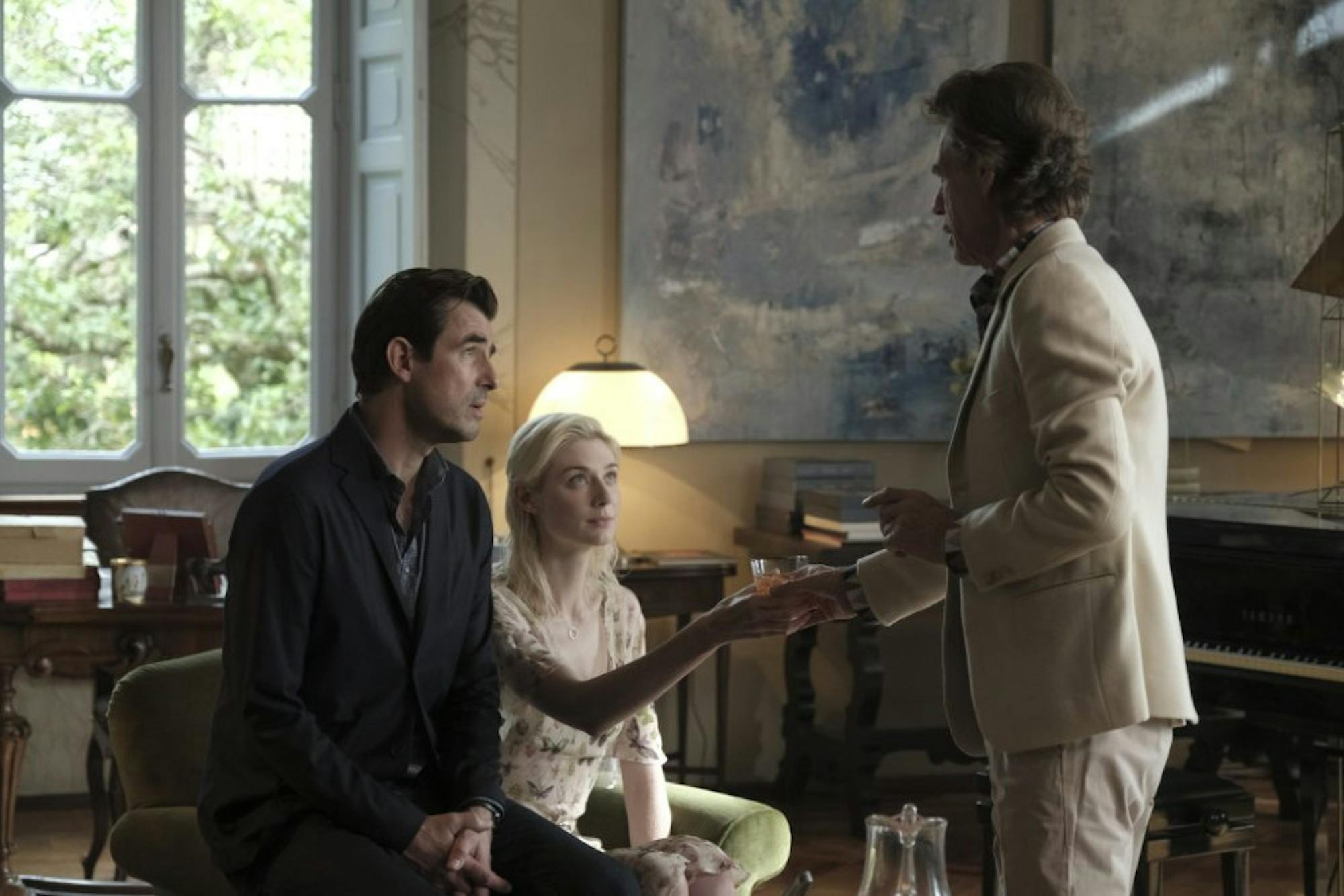The value of art lies in an audience’s interpretation. Abstract art, in particular, is built on the narrative we create for it; we hunt for the heart-wrenching stories of extraordinary people concealed within sweeping brushstrokes of painters or the cursive lettering of writers. We seek distinctive art, and avid collectors are willing to shell out inordinate sums of money to acquire it. But what makes this art different, and does this value still exist if an audience is blissfully unaware of the work’s true origins? These are questions that the neo-noir art film “The Burnt Orange Heresy” addresses.
The movie opens promisingly with art critic James Figueras (Claes Bang) lecturing a crowd at a museum. He gestures to a painting as he tells an unsuspecting audience a tragic story of an imaginary artist who supposedly survived the Holocaust, before revealing testament to the power of the critic. Moments later, we’re introduced to the alluring heroine of the movie, a vacationing school teacher named Berenice Hollis (Elizabeth Debicki). The two are enveloped in a tumultuous romance and are equally quick-witted and spar verbally, much to an attentive audience’s amusement. The suspense and intrigue they build is captivating, as both characters seem charmingly deceptive and equally likely to double-cross the other.

The pair travels to Lake Como, Italy, where frosty-eyed, vicious art collector Joseph Cassidy (Mick Jagger) resides. Jagger’s performance is commendable, and he commands an air of unwavering power over the two. He's short, impeccably dressed, wily and has a wicked smile. He seems like a perfect villain — measured, yet willing to do anything to get his way. He’s dogged in his desire for a painting by the revolutionary artist Jerome Debney (Donald Sutherland) and recruits James to obtain one by any means necessary. James and Berenice meet with Jerome, a wacky artist whose eccentric personality could be dubbed that of a reclusive genius, only for James to realize his task is nearly impossible.
While the movie has some high points, such as the platonic friendship between Jerome and Berenice, the stellar opening scenes as well as those filled with random meddling of the unpredictable Berenice, it devolves into a cliched repetition of the path every stereotypical noir movie follows. Parts of the movie feel like rehashes of preexisting themes, such as James’ trade-in of morality for potential fame in “The Burnt Orange Heresy,” which is reminiscent of 1957 film noir movie “The Sweet Smell of Success.”
In a whirlwind final quarter, the movie falls into a pit of murder, arson and argument as James’ desperation mounts. The ending seems awfully rushed and not very believable. It was also disappointing to see the wonderful battle of mind and mystery set up earlier on wither into what seems like a last-ditch effort to make the movie darker than it should have been.

The acting does, in part, redeem the movie. Jagger and Sutherland are perfectly cast, and Bang and Debicki share an enchantingly unhinged yet seductive tension. The movie is undoubtedly a fun and racy drama, even though it fizzles out toward the end. The opening scenes are a wonderfully strong display of charm, elegance and confidence. The aesthetics of the film, too, are far from disappointing. Warm wood paneling offsets cool white marble; Joseph’s magnetism and opulence contrast Jerome’s cool self-assuredness and simplicity.
While I don't hate the film, it’s definitely difficult to adore it. The movie had immense potential to explore the fragility and potentiality of deceptiveness in art and love, as well as to narrate the massive power that stories hold in creating meaning where there might be none. It might have been more artfully laid out had it addressed the intellectual egotism in the art world discussed in the novel or better analyzed the relationship between revisionism, criticism and artistic value. The movie initially had so beautifully set up a discussion around what “makes” art and whether that art is deemed superior for its quality or the perceived motivation behind its creation. I only wish the producers hadn’t squandered that fantastic opening for a relatively bland middle and end.
Rating: B-






